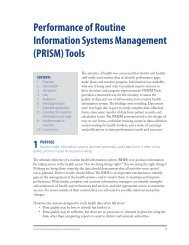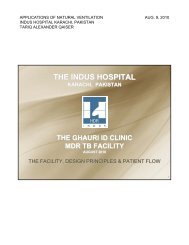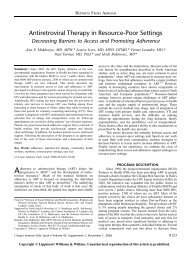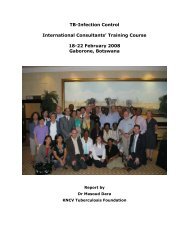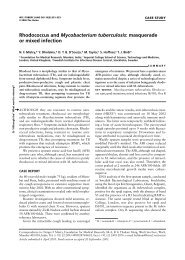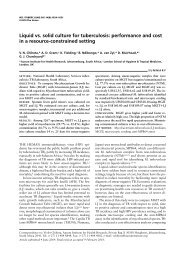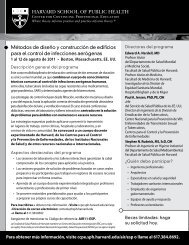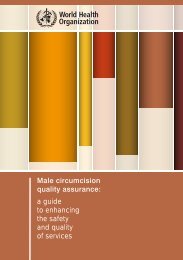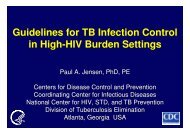THE ARTEMISININ ENTERPRISE - GHDonline
THE ARTEMISININ ENTERPRISE - GHDonline
THE ARTEMISININ ENTERPRISE - GHDonline
You also want an ePaper? Increase the reach of your titles
YUMPU automatically turns print PDFs into web optimized ePapers that Google loves.
ACTs. To address these and other challenges, the market has responded (or could respond)<br />
through four different types of strategies:<br />
• better demand forecasting through the gathering and analysis of more and better data;<br />
more collaboration between stakeholders and developing an agreed methodology;<br />
• multi‐pronged fiscal responses including access to larger amount of funds, more<br />
predictable flow of funds, longer period of funding and more flexible use of funds (eg<br />
for creating a buffer stock of artemisinin or ACTs);<br />
• policy response to address issues related to resistance (for example, prohibiting the<br />
registration and use of artemisinin monotherapy); increasing availability of drugs<br />
through fast track registration of new ACTs; establishing ACTs as a drug of choice and<br />
making ACTs an ʺover the counterʺ drug, etc;<br />
• technology response to stabilize the supply of artemisinin (by increasing yield and<br />
exploring the possibility of creating a non‐agricultural‐based artemisinin product);<br />
discover and develop the next generation antimalarials in case of resistance to ACTs,<br />
etc.<br />
While other stakeholders are focusing on the demand, fiscal and policy‐based responses, the<br />
AE partners are focused on the ʺtechnology responseʺ. The rest of this document reports on<br />
the proceedings of the AE Conference, including the outputs of the breakout group<br />
discussions, the AE technologiesʹ timelines, impact on the market and recommendations.<br />
30



